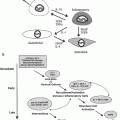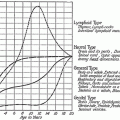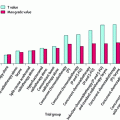Draws on a philosophy of care that attends to
The whole person
The effects of the cancer experience on the family
Wellness versus illness
Staffed by multidisciplinary team consisting of but not limited to
Nurse practitioner and physician with expertize in late effects
Nurse coordinator/case manager
Medical social worker
Services include
Medical record abstraction and treatment summary preparation
Risk-based screening of individuals for physiological and psychosocial late effects
Referrals to other providers for evaluation and treatment as clinically indicated
Care coordinator
Patient and family education about
cancer diagnosis and treatment, potential late effects
current health status including actual late effects
recommendations regarding risk-reduction and regular monitoring
Help obtaining insurance, and educational and vocational services
Opportunities for participation in survivorship research
Assistance with transitioning to another care setting
Tracking of survivors post-transition in case there is need to notify
Education of providers-in-training and non-oncology providers about late effects
2.3 Clinical Care of Childhood Cancer Survivors
Clinical care of childhood cancer survivors includes attention to parental caregivers and indirect care of the population of survivors and the community through education advocacy (Hobbie and Hollen 1993). As with pediatrics in general (Rowland 2005), pediatric oncology nurses take development and function into account. Their nursing care is informed by: (a) knowledge about typical development and important functions for the various age-stage groups they encounter, including adults, (b) sensitivity to how development and function can be altered by the cancer experience, and (c) the design and application of nursing actions that aim to support favorable developmental and functional outcomes. Characteristically, pediatric oncology nurses conduct anticipatory guidance and monitor for potential difficulties with regards to physical, psychological, developmental, and social outcomes of childhood cancer and its treatment.
2.3.1 Long-Term Follow-up Guidelines for the Care of Childhood Cancer Survivors
Recognizing the importance of anticipation in limiting adverse outcomes, that is, late effects, the COG Nursing Discipline and Late Effects Committee collaborated to develop LTFU Guidelines for Survivors of Child, Adolescent, and Young Adult Cancers (Children’s Oncology Group Nursing Discipline and Late Effects Committee 2009; Landier et al. 2004). These guidelines, which are organized by the therapeutic exposure, are derived from evidence about associations between exposures and late effects. They are then integrated with opinions from clinical experts to establish risk-based, exposure-related recommendations about monitoring for potential late effects. Most (88%) guidelines recommend minimal assessments that can be obtained via thorough history and physical examination (Landier et al. 2004). Further evaluation is performed as indicated for survivors with concerning screening results or signs and symptoms. To extend the impact of the clinical visits and standardize the health education and anticipatory guidance, the COG Nursing Discipline and Late Effects Committee also created Health Links, Health Links is comprised of, standardized patient and family educational materials on 33 topics including risk-reduction behaviors to help control potential late affects (Landier et al. 2004). This tool can empower childhood cancer survivors and their caregivers to take steps in daily life to control late effects. One concern about the COG guidelines is that, although they are based on evidence regarding associations between treatments and late effects, the efficacy of the recommended screenings suggested risk-reduction behaviors have not been well evaluated (Institute of Medicine 2006; Landier et al. 2004). Pediatric oncology health professionals nonetheless agree that is reasonable to recommend that survivors adopt behaviors that have been shown to reduce health risks in the general population.
2.4 Models of Care for Childhood Cancer Survivors
As LTFU for childhood cancer survivors has matured, four basic models of care have been developed especially for adolescent and young adult survivors: (a) pediatric oncology directed care within the general program or through a distinct but allied LTFU program, (b) transitional care that aims to assist with the shift to adult oncology or community-based care, (c) adult oncology care, and (d) community-based care by an adult primary care provider in consultation with the pediatric oncology treatment team or LTFU program (Bhatia and Meadows 2006). Additional models of LTFU have been developed based on the individual survivor’s level of complexity of need for care/care coordination or risk for late effects. For example, a model of care that offers same-day, same-clinic access to multiple subspecialists has been developed for survivors with actual late effects or at highest risk for late effects based on treatment intensity (Carlson et al. 2008). In contrast, mail and telephone follow-up have been used with childhood cancer survivors who do not attend LTFU (Parkes et al. 2007), and has been proposed for use with childhood cancer survivors who are at low risk for late effects (Skinner et al. 2007).
2.5 Summary
To summarize, increasing rates of survival and numbers of childhood cancer survivors made late effects and the need for long-term follow-up apparent. Nursing care of childhood cancer survivors includes family caregivers, uses a developmental perspective and is anticipatory. Pediatric oncology nursing has played critical roles in establishing and carrying out LTFU including development of guidelines for risk-based monitoring and standardized health education. Despite the lack of evidence about the efficacy of screening, nursing care of adult survivors of adult cancer can rapidly advance by building on what has been done in pediatrics.
3 Nursing Roles in the Care of Adult Cancer Survivors
The implications for nurses and nurse practitioners in the realm of cancer survivorship care are plentiful. Nurses already play a key role in the application and delivery of treatment summaries and care plans. Additionally, the incorporation of holistic wellness promotion and disease prevention counseling is a natural part of the nursing scope of practice (Ganz et al. 2008). With the growing number of cancer survivors and the accompanying shortage of oncologists, the burden of cancer symptom management and supportive survivorship care is starting to fall on primary care providers and nurse practitioners (Potosky et al. 2011; Rowland and Ganz 2011). The 2006 IOM survivorship report acknowledged that survivorship care planning is congruent with the education and skill set of nurse practitioners and that they are very willing to assume the role, but that they are concerned about the continuously changing nature of cancer surveillance guidelines (Hewitt et al. 2007, p. 38). Primary care NPs and oncology NPs are well versed in routine health maintenance, and can help by advising cancer survivors on issues such as nutrition, exercise, weight management, mental health, smoking cessation, alcohol consumption and cancer screening. Furthermore, nurse practitioners are well suited to provide cancer survivorship care through the integration of clinical care, education and research. With the Affordable Care Act, combined with the growing number of cancer survivors and the increased need for medical providers, nurse practitioners will be assuming more roles and responsibilities, so their involvement in survivorship care planning is critical.
3.1 Clinical Care
Compared to pediatrics, clinical programs that address the needs of adult cancer survivors are emergent. Model clinical programs for adult survivors exist in a few academic centers and the development of eight of these, starting with a pilot at University of Pennsylvania have been supported in part by funding from the LIVESTRONG™ Survivorship Center of Excellence (COE) Network initiative of the LAF. This Network was created to focus attention on adult cancer survivors, its primary goal being to develop and disseminate best clinical practices. Each Network member is located at a (NCI)-designated comprehensive cancer center where it is responsible for coordinating the design, development, evaluation, and integration of programs that aim to meet the needs of cancer survivors into the range of services offered (Lance Armstrong Foundation 2008). Names and locations of Network member institutions and where to access more information about them are shown in Table 2. To address needs that have been largely unmet by conventional oncology or primary care, the focus of the Network to date has been those survivors who have completed therapy (Shapiro et al. 2009).
Table 2
LIVESTRONG™ survivorship center of excellence network members
|
Institution/Location
|
Web address
|
|---|---|
|
University of Pennsylvania (UPenn) Abramson Cancer Center Philadelphia PA
|
|
|
Dana Farber Cancer Institute (DFCI) Boston MA
|
|
|
Fred Hutchinson Cancer Research Center (FHCRC) Seattle WA
|
|
|
University of California at Los Angeles (UCLA) Jonsson Comprehensive Cancer Center Los Angeles CA
|
|
|
Memorial Sloan Kettering Cancer Center (MSKCC) New York NY
|
|
|
Ohio State University (OSU) Comprehensive Cancer Center Columbus OH
|
|
|
University of North Carolina (UNC) Lineberger Comprehensive Cancer Center Chapel Hill NC
|
|
|
University of Colorado (UC) Comprehensive Cancer Center Denver CO
|
Three models of clinical care for adult cancer survivors are being tested by the Network (Shapiro et al. 2009), and the NP carries out key clinical care roles in each of them. In the first model, the “consult model”, the survivor is seen once by an NP or physician with survivorship expertize. The visit typically includes universal screening for psychosocial late effects, treatment-specific clinical assessments (medical and family history, review of systems, physical examination, clinical laboratory evaluation, imaging and other studies) with referrals and other follow-up as clinically indicated. Following the visit, a form of the individualized SCP and results of any assessments are sent to the patient, referring primary care provider, and oncology treatment team. The goal is to empower survivors with information about their cancer treatment, their future health risks, and what can be done to manage those risks including healthy behaviors and regular health care. Responsibility for the care of the survivor remains with the oncology treatment team and/or primary care provider, who through the consultation are also educated about the survivor’s treatment history and health risks and can apply the consultant’s recommendations about regular monitoring. In the second model, the “ongoing care model”, the oncology treatment team hands responsibility for the care of the survivor over to a survivorship nurse practitioner or physician, at an established point in time post-treatment completion. The patient is seen on a regular basis, usually annually, by the survivorship health professional for ongoing monitoring and education about survivorship issues. Communication is maintained between treatment teams and primary care providers. In the third model, the “integrated care model”, survivorship care is provided by the oncology treatment team. An SCP is prepared when the patient completes treatment, and then discussed with the patient at a subsequent “survivorship” visit and annually thereafter by a treatment team NP. Responsibility for the care of the survivor remains with the treatment team in the short term. Patients who are at low risk for late onset versus persistent treatment effects can be identified and eventually transitioned to primary care with recommendations for regular screenings and ongoing communication between providers (Shapiro et al. 2009).
Although yet to be systematically evaluated through research, the integrated model of care for adults with cancer may have disadvantages that resemble those previously observed, in the care of childhood cancer survivors. Some of disadvantages could be that: (a) the needs of patients in active treatment are prioritized over survivors’ typically non-urgent needs, and more so as the number of patients in active treatment continues to grow (Shulman 2009), (b) the main area of concern at treatment completion is disease recurrence and so when information about late effects is presented at the end of treatment survivorship visit, patients and family caregivers may not absorb it, (c) survivors can feel social pressure to express only gratitude for successful treatment completion, and therefore lack willingness to discuss negative aspects of their treatment with those who delivered it. Furthermore, as the literature expands, oncology nurses and other health professionals may find it challenging to keep up with innovations in treatments and growing knowledge about survivorship. The benefits of the integrated approach include increased opportunities for direct communication and collaboration among health professionals.
Nurse Practitioners who provide clinical care for survivors can examine the survivor’s treatment summary to determine his or her cancer-related health risks, and thus offer an approach to clinical care. Survivors who are at low risk for late effects might participate in annual postal assessments apropos to health-related quality of life and risk-based interim history. Postal assessments are reviewed by the nurse or NP who then initiates clinical evaluation for the patients reporting concerning signs and symptoms. At the other end of the risk spectrum, the NP may do ongoing symptom management and care coordination for survivors whose actual or potential late effects are numerous or complex, for example, survivors who have been treated with cranial or mantle radiation.
The role of the nurse to date has been fairly constant across COE clinical programs. Ideally, following the IOM recommendations (Institute of Medicine 2006), a treatment summary is completed and distributed to the patient at the completion of therapy. Therefore, a role for nursing in the clinical care of cancer survivors within the realm of medical record review and abstraction is to create a treatment summary. Network members have created institution-specific treatment summary templates that are intended to be completed by an oncology health professional such as a nurse, and if at all possible may become part of the survivor’s electronic medical record. Alternatively, “A Prescription for Living” (Haylock et al. 2007), is a generic template that any nurse or survivor can use to create an individualized treatment summary based on the official medical record or the survivor’s personal records. Along these same lines, the Network is collaborating with University of Pennsylvania’s OncoLink to expand its Web-based treatment summary and Survivorship Care Plan (SCP) (see Table 3), which is called OncoLife™ (Shapiro et al. 2009).
Table 3
Sources for clinical practice guidelines related to adult cancer
|
Resource
|
Organization
|
Web address
|
|---|---|---|
|
“Putting evidence into practice”
|
Oncology Nursing Society (ONS)
|
|
|
Clinical practice guidelines
|
American Society of Clinical Oncology (ASCO)
|
|
|
Clinical practice guidelines
|
National Comprehensive Cancer Network (NCCN)
|
In creating the treatment summary, the nurse should address all of the essential elements including: the cancer diagnosis and date, treating oncologist(s), elements of the treatment regimen (type and date of any surgeries to control the cancer; chemotherapy agents, routes of administration, and total dose when indicated; radiation type, field, fractionation, and total dose; transplant type and date), major acute treatment effects including psychosocial difficulties, date of treatment completion, current health status including non-cancer related comorbid conditions, and persistent treatment effects and known late effects. Essential elements of the SCP include all of the components of the treatment summary plus recommendations about cancer and treatment-specific screenings, advice about lifestyle changes to optimize the survivor’s health, and information about the availability of psychosocial resources and referrals (Institute of Medicine 2007).
Unlike pediatrics, widely accepted exposure driven evidence-based or consensus-based guidelines are not yet available to guide creation of the SCP
Stay updated, free articles. Join our Telegram channel

Full access? Get Clinical Tree







